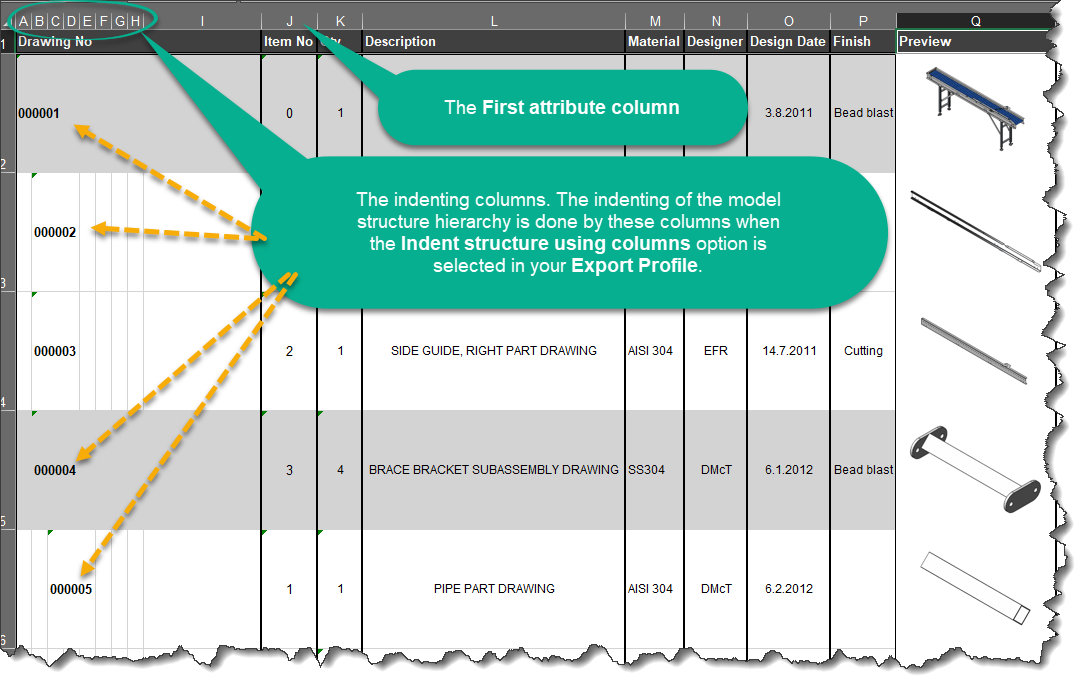| Profile name | Specifies the name of the export profile. | ||
| Profile type |
Specifies the type of the export profile. Excel Report attaches the Export profile to the build-in Excel Report module. If the integration is customized, the name will have a star (*) appended i.e., Excel Report*
If the module is customized, then this page might not be accurate in terms of what is supported and what is not.
|
||
 |
Opens the Template Settings dialog box. Use the Template Settings dialog box to define settings in relation to the Excel file template. | ||
| Quick Access | Select this option to add the export profile as a Quick Access menu item under the Export button in the CUSTOMTOOLS Command Manager tab. When the menu item is selected, Export dialog is opened with this export profile selected. | ||
| Allow using in SOLIDWORKS PDM |
Select this option to allow usage of the selected Export Profile with the SOLIDWORKS PDM integration.
This option is not selectable in an environment that does not support the option. However, in case that the type of your selected Export Profile just does not support the Allow using in SOLIDWORKS PDM option, you receive an error message while attempting to exit the Export Profile dialog box. |
||
| Output path |
Specifies the destination path and the desired file name.
The > menu contains pre-defined attributes that you can use to generate dynamic output path and filename. |
||
| Configurations to export | Select the desired method to process configurations of the models included in your structure to export. | ||
| Language | Specifies the content language for the output file. |

